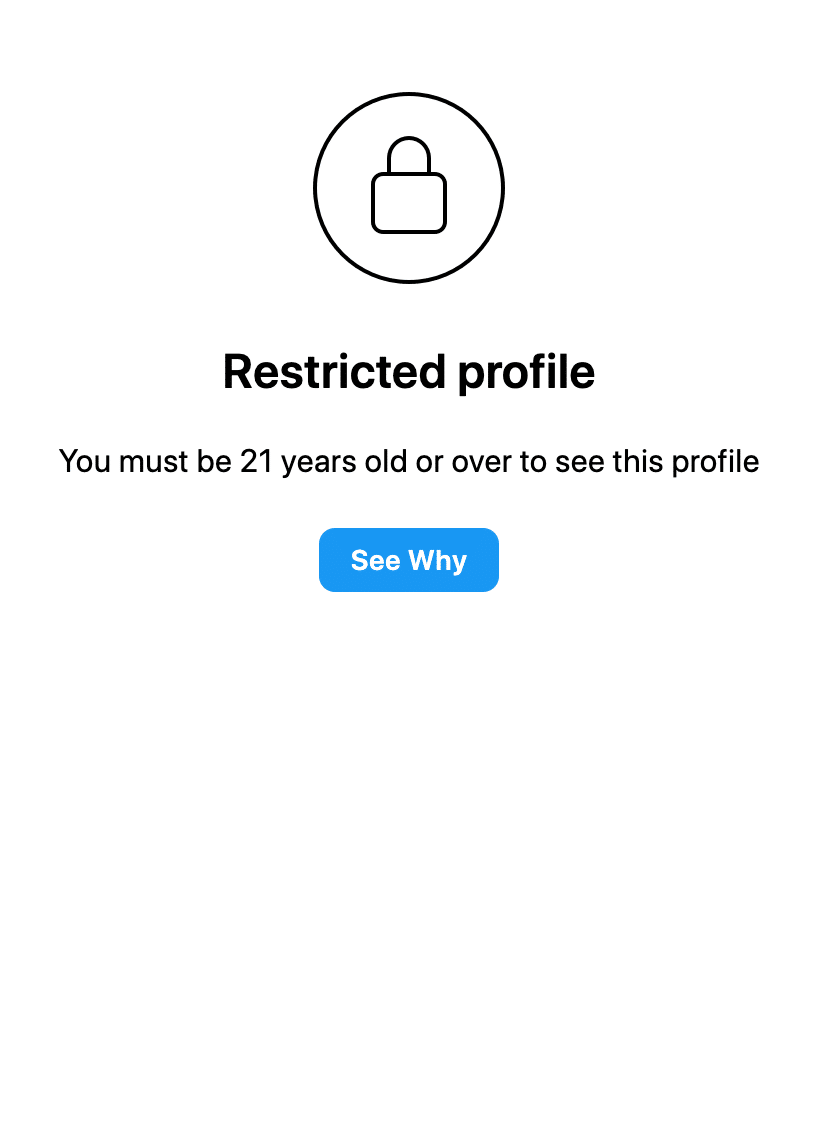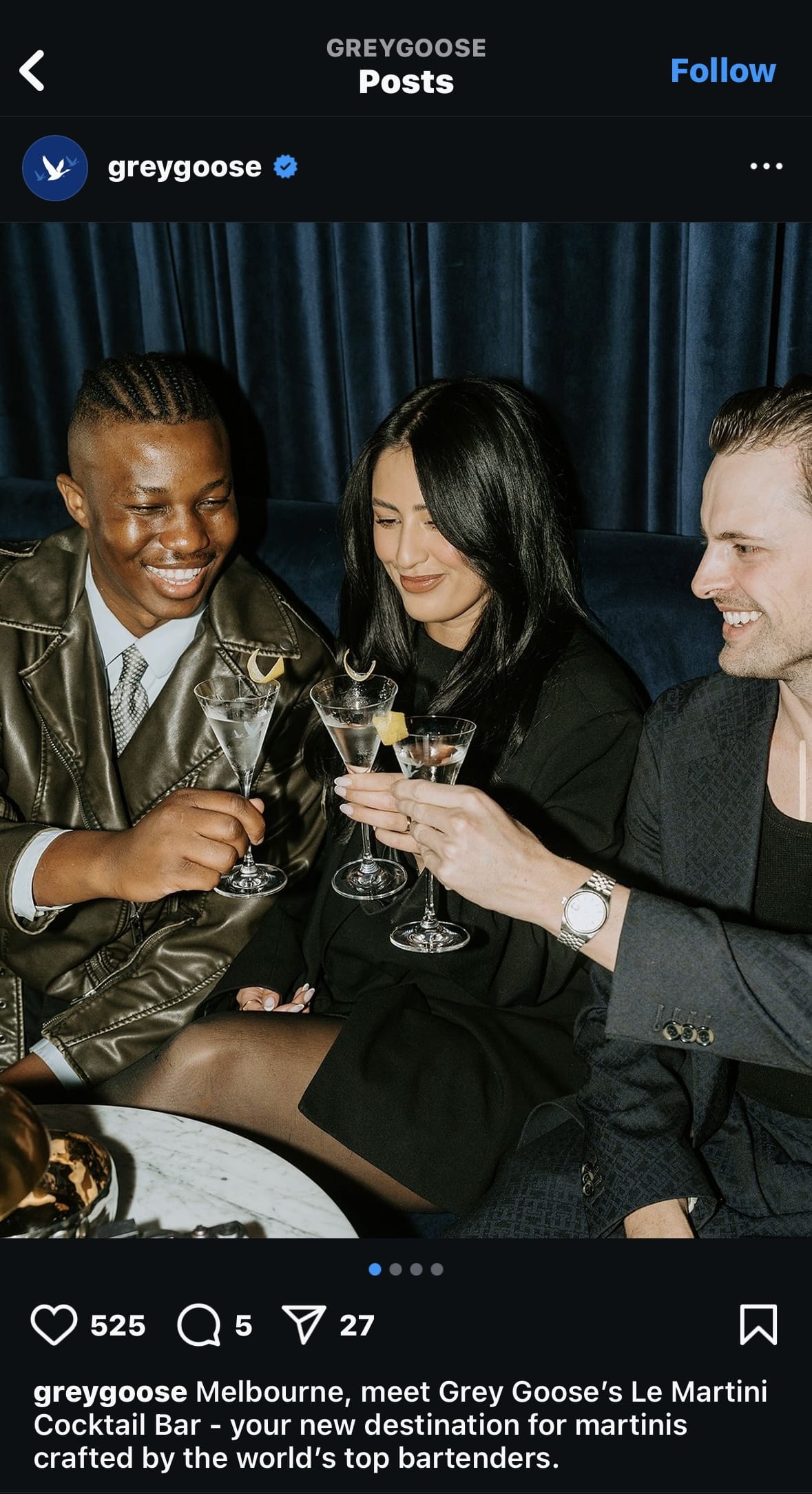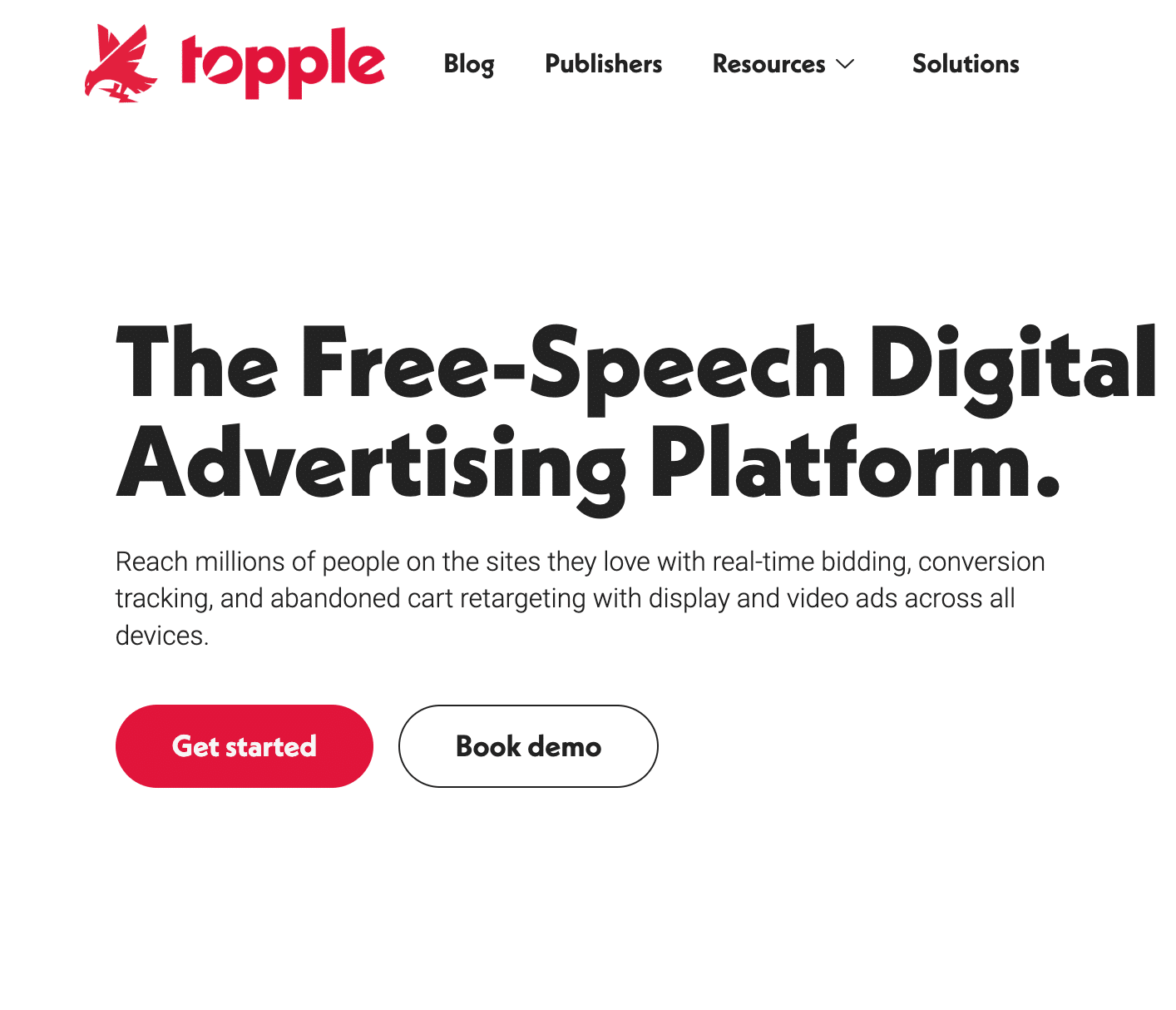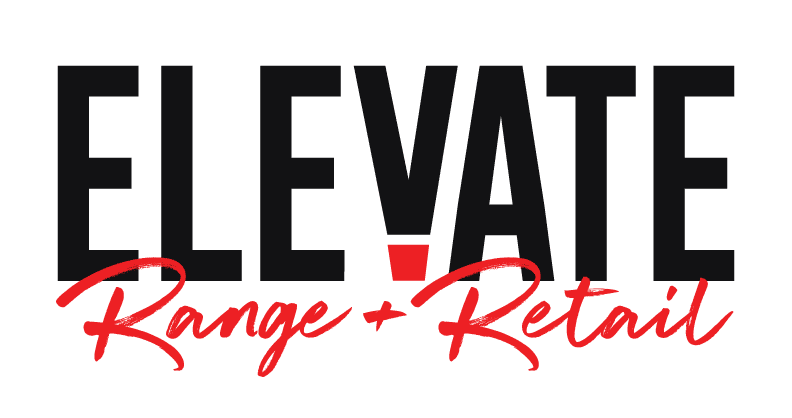Advertising restrictions under the SHAFT guidelines (Sex, Hate, Alcohol, Firearms, and Tobacco) impose significant challenges on brands within these industries. Platforms like Facebook, Instagram, and Google have strict rules that make it difficult to market alcohol and firearms directly. However, strategic promotion techniques can help these brands thrive within compliance boundaries. In this guide, we’ll explore various tactics, backed by examples from both alcohol and firearm brands, to help you navigate this restrictive advertising landscape.
1. Age-Restricted Content: Keeping It Legal and Safe

Key Strategy: Implement age-gating features on your website and social media platforms to ensure only users of legal age can access your content.
Examples:
- Instagram: Just as Jack Daniel’s sets age restrictions on its social media accounts, firearm brands like Smith & Wesson also use age-gating to ensure only appropriate audiences view their content. This not only complies with platform rules but also builds trust with their audience by demonstrating a commitment to responsible marketing.
Implementation Tip: Whether you’re promoting alcohol or firearms, clearly state on your profiles and website that your content is intended for an audience of legal age. Use age verification pop-ups to gate access effectively.
2. Focus on Lifestyle and Experience: Selling More Than Just a Product

Key Strategy: Instead of directly advertising the alcohol or firearm product, promote the lifestyle, experiences, and responsible usage associated with your brand.
Examples:
- Lifestyle Imagery: Similar to how Grey Goose posts images of elegant gatherings, Daniel Defense often shares content that highlights outdoor lifestyles, hunting trips, and shooting sports that resonate with their audience. They focus on the experience of using their products in nature and sport, aligning with a responsible and adventurous lifestyle.
- Educational Content: Firearm brands like Sig Sauer provide content on safe firearm handling, maintenance tips, and responsible ownership, creating value for their audience without direct sales pitches. Alcohol brands can take a similar approach by offering mixology tips, party planning advice, or responsible drinking guidelines.
Implementation Tip: Create content that reflects the ethos of your brand and resonates with the lifestyle of your target audience, whether it’s the elegance of a cocktail evening or the thrill of a hunting expedition.
3. User-Generated Content (UGC): Let Your Fans Be Your Voice
Key Strategy: Encourage your audience to share their experiences with your brand. This approach not only builds community but also serves as a powerful endorsement.
Examples:
- Branded Hashtags: Budweiser has successfully used hashtags like #ThisBudsForYou, encouraging users to share their Bud moments. Similarly, Glock promotes hashtags like #GlockPerfection, where firearm enthusiasts post their own content. This strategy lets the community do the talking and allows the brand to showcase authentic user experiences.
- UGC Contests: Host contests where users submit photos or videos featuring your product in a compliant manner. For example, a wine brand could run a contest for the best picnic setup, while a firearm brand like Browning might encourage users to share their best outdoor adventure photos with their products.
Implementation Tip: Always ensure UGC is in line with platform guidelines, and feature content that showcases your brand positively and responsibly.
4. Influencer Marketing: Leverage Trust and Reach

Key Strategy: Partner with influencers who align with your brand and can create content that complies with platform rules.
Examples:
- Influencer Partnerships: Tito’s Vodka collaborates with influencers who integrate the product into their lifestyle content. Similarly, firearm brands like Ruger work with hunting and shooting sports influencers who demonstrate safe, responsible use of their products in compliance with advertising guidelines.
- Sponsored Content: For alcohol, this might mean influencers sharing their favorite cocktail recipes; for firearms, it might be influencers showcasing safe handling practices or outdoor shooting adventures, as seen with influencers promoting Beretta.
Implementation Tip: Choose influencers whose content style and audience match your target market, and ensure they clearly disclose partnerships in accordance with advertising standards.
5. Email Marketing: Direct Communication with Your Audience
Key Strategy: Use email marketing to connect directly with your audience for product updates, exclusive offers, and engaging content.
Examples:
- Email Campaigns: Brands like Barefoot Wine send newsletters featuring pairings and seasonal recipes. Remington, a firearm brand, similarly uses emails to share new product releases, safety tips, and exclusive offers. Email allows both alcohol and firearm brands to circumvent restrictive advertising rules on social media.
- Personalized Offers: Segment your email list to send targeted offers based on user preferences. For instance, you might send cocktail recipes to one segment and event invites to another, just as a firearm brand might send product maintenance tips to one group and range day invites to another.
Implementation Tip: Regularly update and verify your email lists to ensure compliance with age restrictions and to maintain an engaged audience.
6. Website and Blog Content: Own Your Narrative

Key Strategy: Your website and blog are spaces where you have full control over your content. Use them to tell your brand story, share recipes, or educate your audience about your products.
Examples:
- Educational Blog Posts: Just like Hendrick’s Gin uses its blog to share quirky brand stories, firearm brands like Colt publish articles on topics like the history of their products, responsible ownership, and technical insights. For alcohol brands, this could translate into sharing the origins of a drink or cocktail crafting tips.
- Product Tutorials: Offer detailed guides on how to use your products responsibly. While an alcohol brand might share a video on creating a signature cocktail, a firearm brand like Smith & Wesson might offer a video on proper firearm cleaning techniques.
Implementation Tip: Leverage SEO to drive traffic to your website by optimizing blog content with relevant keywords that appeal to your target audience’s interests.
7. In-Person Events and Experiences: Bringing Your Brand to Life
Key Strategy: Host branded events that allow customers to experience your product in person. These can be promoted as lifestyle experiences rather than direct product sales.
Examples:
- Tastings and Classes: Just as Patrón Tequila offers mixology classes, firearm brands like Sig Sauer host range days and training sessions that emphasize safe and responsible product use. These events foster community and allow for hands-on brand engagement.
- Pop-Up Events: Set up branded pop-up bars or shooting events at festivals, sports events, or popular venues. Bud Light often features at music festivals, while Benelli may host demo days at ranges.
Implementation Tip: Collect contact information at these events to build your email list, converting attendees into long-term brand advocates.
8. Paid Media Platforms: Expand Reach Beyond Traditional Channels

Key Strategy: Use alternative paid media platforms that specialize in advertising for restricted categories like alcohol and firearms.
Examples:
- Topple: A platform specifically designed to accommodate brands restricted by mainstream advertising rules, including alcohol and firearms. Topple allows for more targeted advertising with fewer limitations, reaching audiences interested in lifestyle, culture, and responsible product use.
- Reddit Ads: While still needing to comply with certain restrictions, Reddit’s diverse communities allow alcohol and firearm brands to target niche interest groups through sponsored posts and ads in relevant subreddits. Brands like Jim Beam have effectively used Reddit to engage with communities passionate about bourbon culture.
- Podcast Advertising: Platforms like AdvertiseCast and Podcorn enable brands to place ads on podcasts that cater to audiences interested in specific lifestyles, hobbies, or industries, such as mixology podcasts for alcohol brands or hunting and shooting sports podcasts for firearm brands.
Implementation Tip: Explore niche advertising networks, podcasts, newsletters, or industry-specific websites that are open to brands from restricted industries to increase your reach without the usual ad limitations.
9. Navigating Google Ads Approval Process: Strategies for Compliance
Key Strategy: Understand Google Ads’ policies and create campaigns that focus on compliant content to improve the likelihood of ad approval.
Campaign Examples:
- Educational and Informational Content: Instead of directly promoting products, focus on educational campaigns such as “How to Make the Perfect Martini” for alcohol brands or “Firearm Safety Tips for Beginners” for firearm brands. For instance, Jameson Irish Whiskey can create a campaign promoting a guide on whiskey tasting, driving traffic to a blog post that indirectly highlights their brand.
- Event Promotions: Promote events like tastings, workshops, or classes without directly selling alcohol or firearms. A campaign might advertise a virtual cocktail class or a firearm safety seminar, providing value without pushing product sales.
- Lifestyle and Community Engagement: Ads that drive users to join a community or subscribe to a newsletter. For example, an ad that promotes “Join Our Whiskey Lovers Community” for an alcohol brand or “Sign Up for Safe Shooting Tips” for a firearm brand like Smith & Wesson.
Implementation Tip: Use ad copy that emphasizes education, community, and lifestyle rather than direct product promotion. Always link to landing pages that maintain this focus to stay within compliance boundaries.
10. Meta Ads (Facebook and Instagram): Strategies for Approval and Compliance
Key Strategy: Work within Meta’s advertising policies by focusing on lifestyle, education, and indirect brand promotion to navigate restrictions on alcohol and firearm ads.
Examples and Strategies:
- Lead Ads for Age-Restricted Content: Use Facebook Lead Ads to gather contact information from users who express interest in your brand, allowing you to build an age-verified email list. For example, a lead ad offering a downloadable guide on “The Art of Crafting Cocktails” or “Firearm Safety Basics” can be effective for alcohol and firearm brands, respectively.
- Educational Video Content: Create video ads that focus on educational content or tutorials, which are often more acceptable under Meta’s guidelines. Brands like Smirnoff can promote videos on crafting cocktails without showcasing the actual consumption of alcohol, while firearm brands like Glock can promote videos on safe handling techniques without showing firearms being fired.
- Event-Based Ads: Promote events indirectly linked to your products, such as a whiskey-tasting event or a firearm safety course. Ensure the ads emphasize the experience rather than the sale or use of the products. This approach can be seen in brands like Miller Lite, which promotes social gatherings rather than the beer itself.
Implementation Tip: Regularly review Meta’s advertising policies to stay updated on acceptable practices. Use Meta’s ad review and feedback options to understand why ads are rejected, and adjust your approach accordingly. Testing different ad formats (e.g., carousel ads, video ads) can also help identify which styles are more likely to be approved.
Conclusion
Navigating SHAFT compliance requires creativity, strategic planning, and a commitment to responsible marketing. By leveraging age restrictions, lifestyle content, UGC, influencer partnerships, compliant paid media platforms, and carefully crafted landing pages, alcohol and firearm brands can effectively promote their products within the rules. Using specialized platforms like Topple, navigating Google and Meta ad approval processes, and focusing on indirect engagement strategies can help these brands thrive. Compliance doesn’t limit creativity—it inspires innovative approaches that resonate with audiences meaningfully and responsibly.
